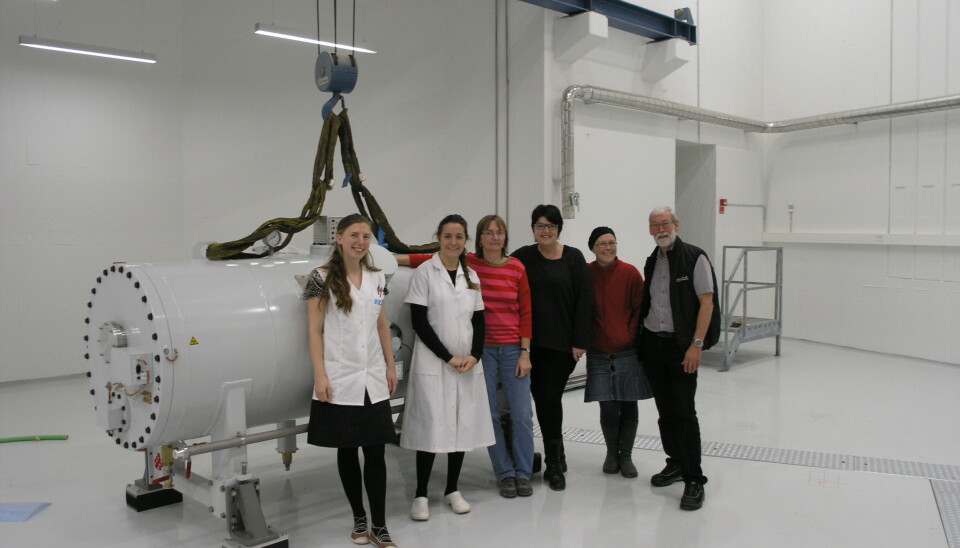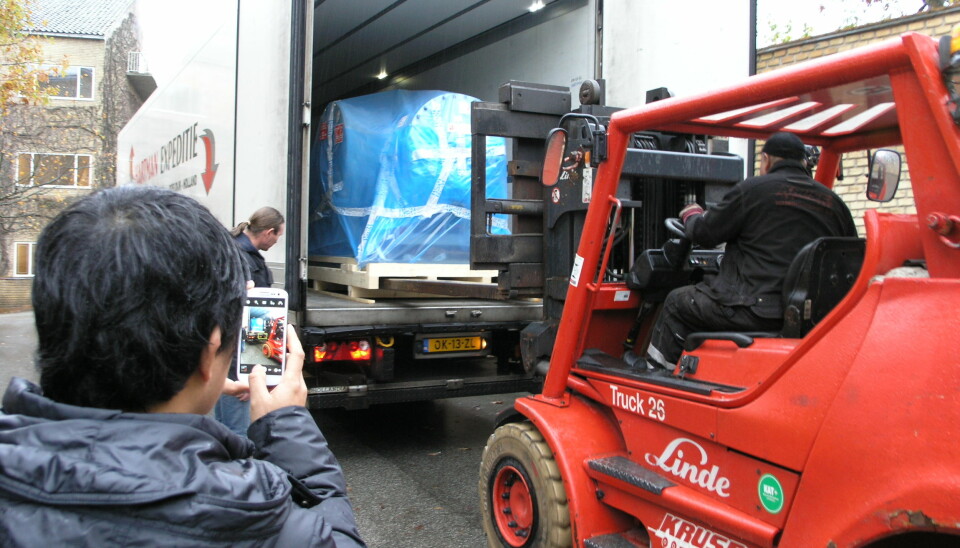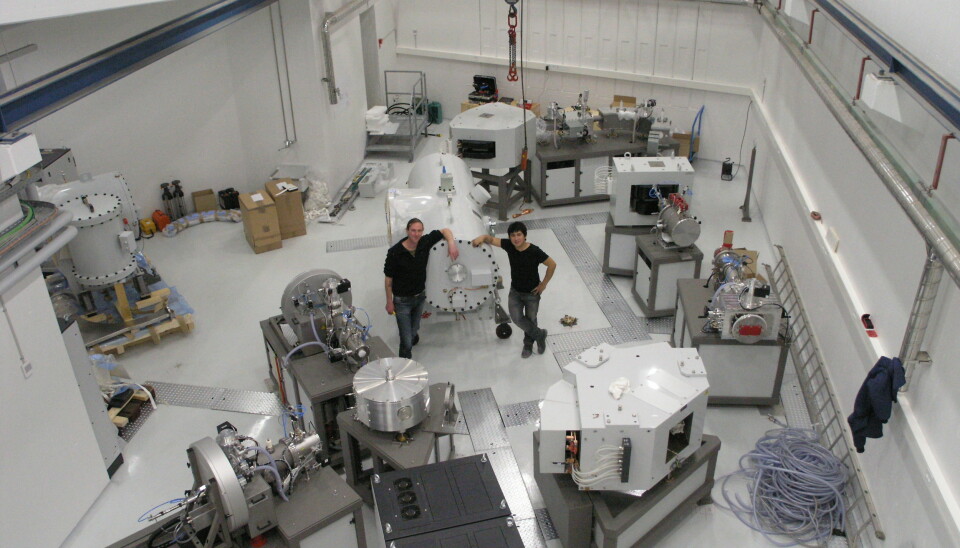New atom accelerator at Aarhus University
A new, highly advanced atom accelerator has just arrived at Aarhus University, Denmark. The new technology will be used on everything from dating human bones to charting the history of the Sun.
Researchers at Aarhus University are filled with excitement as a new atom accelerator is currently being set up at the Department of Physics and Astronomy.
”We are like little kids on Christmas Day because we have some of the tastiest new technology in front of us,” says Associate Professor Jan Heinemeier, who together with colleagues has spent the past three years trying to get the new accelerator to Aarhus University.
Accelerator to date human bones
The primary task of the new atom accelerator which, according to Heinemeier, is the most sophisticated accelerator of its kind, will be to carry out accurate carbon-14 datings.
For example, it only needs tiny samples in order to determine the exact age of ancient human bones, Iron Age spears, mammoth skeletons, Viking ships and a wide variety of other items.
A great deal of sophisticated and effective methods have emerged since we started using the old machine. The new one represents the very latest in this size and category of accelerators.
”In the old days, carbon-14 datings were carried out using a Geiger counter, which measured radioactive decay from the sample to be dated. But this was an extremely inefficient way of doing it,” he says.
”That’s why atom accelerators such as this one have revolutionised carbon-14 dating. Now we can get by with 10,000 times less sample material than before. That’s what makes the whole thing so exciting.”
Weight of isotopes helps determine age
In carbon-14 dating, the carbon-14 contents of a material are measured to determine how old the material is.
Carbon has two stable, nonradioactive isotopes: carbon-12 and carbon-13, and a radioactive isotope, carbon-14, also known as radiocarbon. It is these radiocarbons that enable scientists to determine the age of an object.
One million volts
It can be used to chart the history of the Sun with a very high accuracy. The amount of the Beryllium-10 isotope in the samples informs us about the Sun’s activity over the centuries, and that is very relevant in relation to climate change.
The new atom accelerator has an electric potential of one million volts. The old accelerator at Aarhus University had an electric potential of no less than five million volts, but it broke down in 2010 in connection with renovations at the university.
Although the new accelerator has a lower electric potential, it does not mean that the new equipment is less effective, says Heinemeier.
“A great deal of sophisticated and effective methods have emerged since we started using the old machine. The new one represents the very latest in this size and category of accelerators.”
Charting the history of the Sun
The AMS 14C Dating Centre at Aarhus University is the Danish national centre for carbon-14 dating, which means that the centre collaborates with a variety of researchers and institutions, from Denmark and abroad, that need to determine the age of a wide range of objects.
In addition to carbon, the accelerator will also be used to analyse samples to determine the contents of extremely rare isotopes from seven other substances.
The new technology can e.g. determine the content of the Beryllium-10 isotope in ice core or sediment samples.
”It can be used to chart the history of the Sun with a very high accuracy. The amount of the Beryllium-10 isotope in the samples informs us about the Sun’s activity over the centuries, and that is very relevant in relation to climate change,” says the researcher.
The new accelerator will be up and running within the next six months, as it takes some time to adjust and test the technology.
----------------------------
Read the Danish version of this article at videnskab.dk








